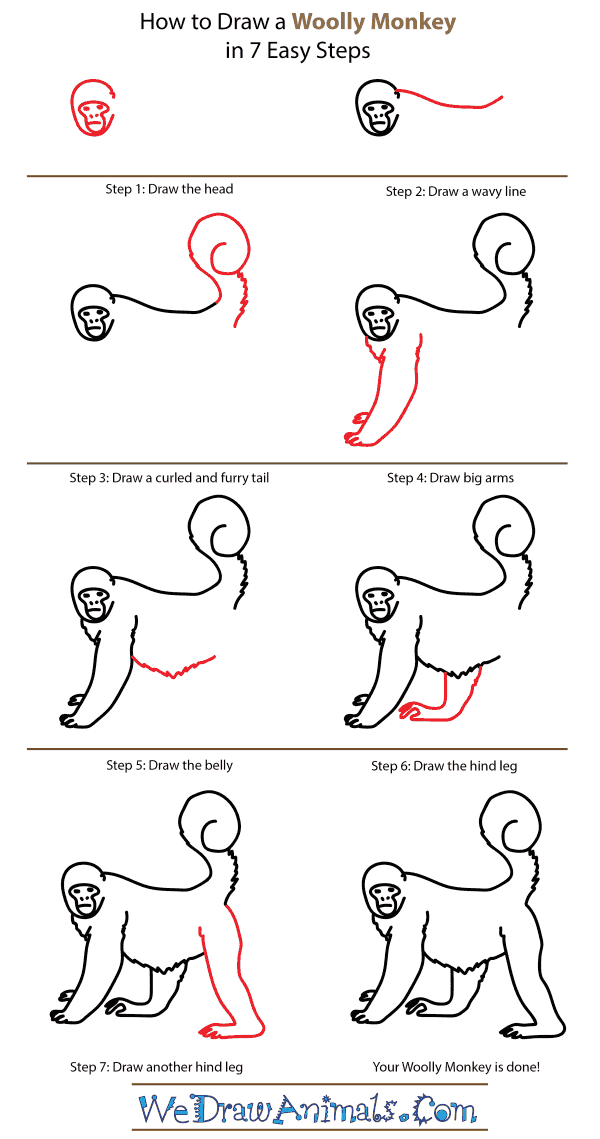In this quick tutorial you'll learn how to draw a Woolly Monkey in 7 easy steps - great for kids and novice artists.
The images above represent how your finished drawing is going to look and the steps involved.
Below are the individual steps - you can click on each one for a High Resolution printable PDF version.
At the bottom you can read some interesting facts about the Woolly Monkey.
Make sure you also check out any of the hundreds of drawing tutorials grouped by category.
How to Draw a Woolly Monkey - Step-by-Step Tutorial
Step 1: Draw the head, be sure the face is framed in seperately from the fur
Step 2: Draw an arched line for the back
Step 3: Continue this up into a full curled tail
Step 4: Draw large furry arms directly in front
Step 5: Extend the furry belly line to the back
Step 6: Draw a hind leg directly in the middle of the monkey's belly
Step 7: Finish with your final hind leg
Interesting Facts about the Woolly Monkey
This South-American monkey is native only to that region, including all four of its varieties. The color of these simians varies between dark brown, reddish-brown, grey and olive, with their back sides being lighter in color than their bellies. Most every woolly monkey has a black face and pink palms, with a long and strong tail that acts as a fifth limb used for grabbing tree branches and other items in their habitat. Males are much larger than the females of this species, their average weight somewhere around seventeen pounds. The woolly monkey prefers humid and high-elevation areas to feed and make its home, and they are especially fond of flooded rain forests where humidity is a need that is easily met. This species of monkey is preyed upon by eagles and large feline species, which is why they tend to remain high up in the treetops.
Did you know?
- Females of this species rarely stay around the groups they were born into, leaving so that they may find mates.
- They are a very social species, with the size of their groups ranging from ten to fourty-five individuals.
- When out foraging for food on the forest floor or in trees, however, the groups of woolly monkeys tends to be much smaller, about two to six individuals per group, to help avoid large instances of food competition.
- Woolly monkeys are omnivorous, eating fruits, leaves, seeds and flowers as well as invertebrate that they find in their habituate.
- All groups of woolly monkey are led by a singular alpha male.
- They are incredibly effective communicators, using vocalization, their sense of smell and sight, as well as tactile maneuvers to convey ideas to one another.
The population of this species is considered to be in decline to due to the interference of humans in their environment. This species is polygamous, meaning that the males will often find more than one mate. Play serves numerous purposes for the young and older woolly monkey alike, as it helps to facilitate bonding as well as establish the “pecking order” of the group early on in the monkeys’ development.








